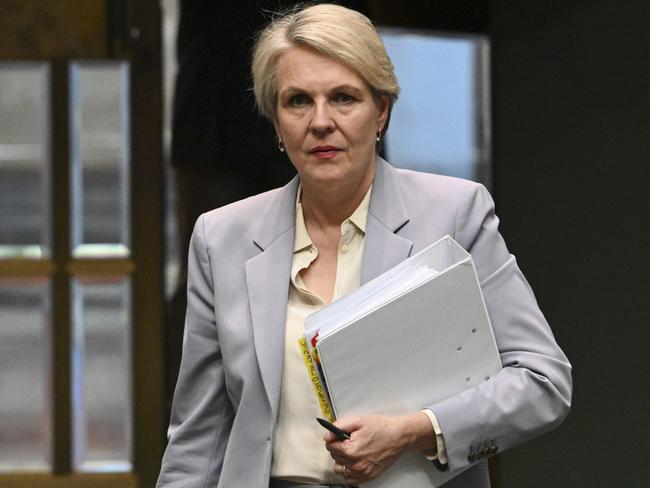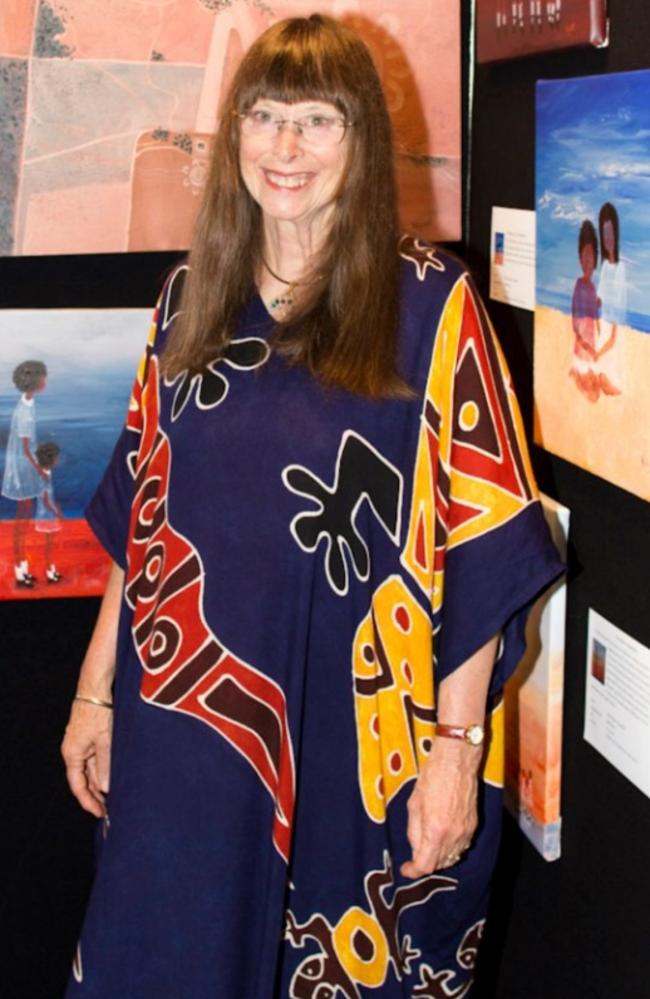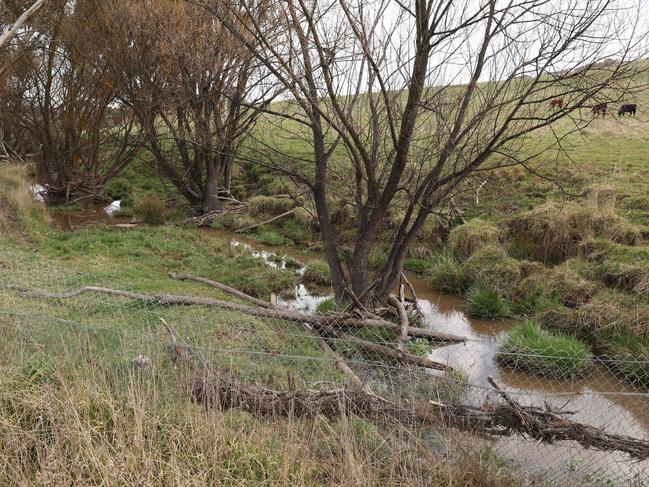Andrew Bolt: Tanya Plibersek sells gold down the river by imposing heritage conditions on gold mine
Tanya Plibersek’s decision to essentially ban a NSW $1bn gold mine on Indigenous cultural heritage grounds seems reckless and extraordinarily gullible. Isn’t it time for more scepticism?
Andrew Bolt
Don't miss out on the headlines from Andrew Bolt. Followed categories will be added to My News.
Has Tanya Plibersek fallen for another dodgy claim of a “sacred site”?
To say the least, the federal Environment Minister’s decision to now essentially ban a NSW $1bn gold mine seems reckless and extraordinarily gullible.
That seems even more so now that I’ve checked the woman whose objection to the mine, near Orange, has now helped to cripple it.
Nyree Reynolds is an artist who says she’s a “very light-skinned descendant” of an Aboriginal woman born “in the 1820s”, and is now “sharing her voice that was silenced many skies ago”.
She also claims she’s an elder of the local Wiradjuri tribe, although her biographies on the websites of the University of New South Wales, the Aboriginal Art Directory and the Roots Gallery that sells her art all say that she’s of the Gamilaraay language group, just north of the Wiradjuri lands.
Maybe she’s both. Whatever, three years ago Reynolds put in a formal objection to a planned tailings dam for the proposed mine under the Aboriginal and Torres Strait Islander Heritage Protection Act, claiming it was a sacred site.

She said the mine was near the Belubula River which “is like an artery through our land as shown by this painting I did to be permanently displayed in Blayney hospital”. She included a picture of her painting.
She went on: “Many Dreaming stories follow its path and no one has the right to destroy this … This river sustains life. It will not sustain life if the headwaters are poisoned.”
There is no evidence the mine would poison any river.
What’s more, the traditional owners, the Orange Local Aboriginal Land Council, did not object to the mine, saying it “would not impact any known sites or artefacts of high significance”. The mine has passed every approval hurdle.
Except for Plibersek.
Plibersek stepped in under this same heritage protection Act and said no to the tailings dam. She said that didn’t kill the mine itself, but the mine operators insists it does. Say goodbye to more than 800 jobs.
Plibersek now says it wasn’t Reynolds who made her say no to the mine development. She also heard from another group of Aboriginals who were against it.
But who? She means the Wiradyuri Traditional Owners Central West Aboriginal Corporation, a dissident Aboriginal corporation registered with just 18 members. Oddly, they list only their first names on the Office of the Registrar of Indigenous Corporations website.
Plibersek won’t say exactly who gave her evidence and what it was, claiming it’s secret.
But she says: “I accept that the headwaters of the Belubula River are of particular significance to the Wiradjuri/Wiradyuri people in accordance with their tradition.”

How she reached that conclusion is something we and the mine owners may never know.
This process seems completely arbitrary – a wilful pick-and-choose.
Roy Ah-See, a senior Wiradjuri leader and former NSW Aboriginal Land Council chairman, said Plibersek should have listened to the traditional owners instead.
Besides, who today seriously still believes in unseen songlines?
How many Aboriginals in NSW still go through initiation rituals, and would a mine really end their culture, when the vast majority already live in Western ways and fewer than 2 per cent say they follow traditional Aboriginal religions or beliefs?
If Plibersek really has evidence to justify this economic vandalism, she should present it.
But for now this looks as dodgy as all get out, and another sign of the Albanese government’s intellectual rot.

Isn’t it time for more scepticism in such cases?
After all, the Federal Court early this year exposed how lawyers of the government-funded Environmental Defenders Office invented Aboriginal “traditions” to delay the $5.8bn Santos gas project in the seas north of Darwin.
They’d helped three Tiwi Islanders who claimed an underwater pipeline would anger the rainbow serpent and a Crocodile Man in that part of the sea, and also disturb graves and sacred sites of Aboriginals who lived there more than 20,000 years ago, when the seas were 120m lower and the sea bed was land.
They actually claimed they could identify the topography and sacred sites of land drowned thousands of years ago, thanks to oral traditions passed on over more than 600 generations.
Thankfully, the judge didn’t buy something so preposterous: “It is implausible that an ancient oral tradition could yield such detailed information.”
Why couldn’t Plibersek show the same healthy scepticism? Why choose to believe – at such a cost – people and claims not believed even by the traditional owners?
Originally published as Andrew Bolt: Tanya Plibersek sells gold down the river by imposing heritage conditions on gold mine



